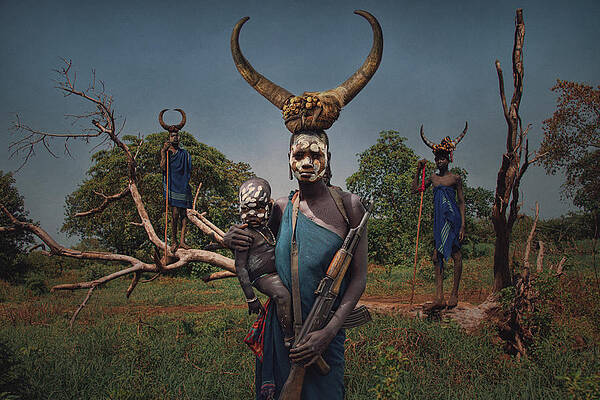#mother
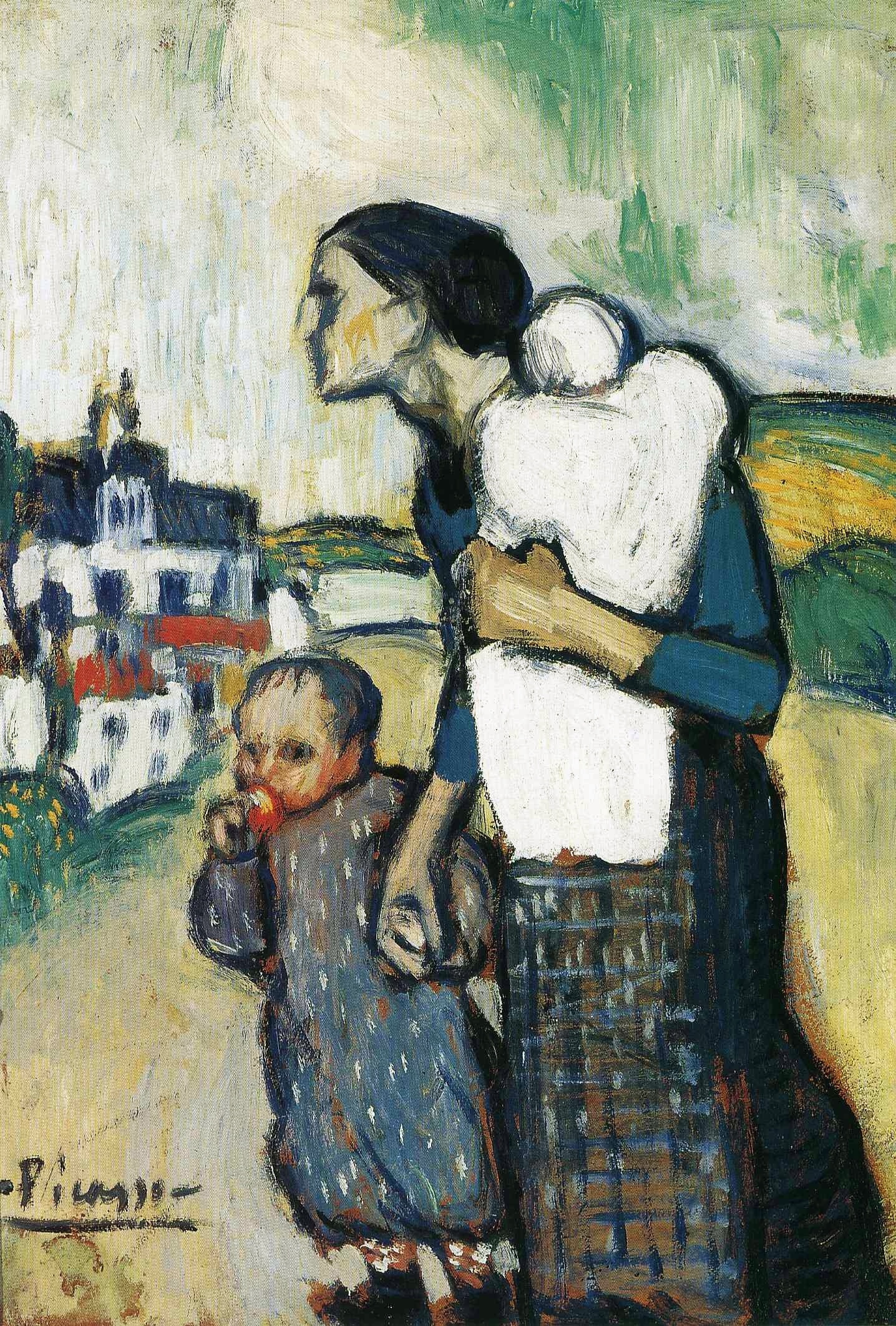
#picasso #art #mother #children
MOTHER LEADING CHILDREN
Picasso~1901.
- The image is modeled after a woman Picasso encountered in 1901 at the Prison of Saint-Lazare in Paris where women would be incarcerated with their infants. Picasso continued painting on the Saint-Lazare prison 'mother and child' theme even after moving from Paris to Barcelona in January 1902.

#mother
The Laundress
1850 - 1853
Artist: Honore Daumier
- French artist Daumier was familiar with and cared about the common people's lives. In this painting, he portrayed a very common scene from life, a mother with laundry and her child. The painter highlights the characters' body movements, which depicts a mother rushing home and reveals her spirit of bravely struggling with life.

Tuesday, April 9 and the celebration will continue through Wednesday, April 17. We hope you will join in as much as possible.
#Navratri was always celebrated in India with Shri #Babaji where He was often honoured as the #Divine #Mother and draped in a chuni or veil and hundreds would travel from all over to be with Him.
https://www.babajiashram.org/newsletters/2024/newsletter-2024-april
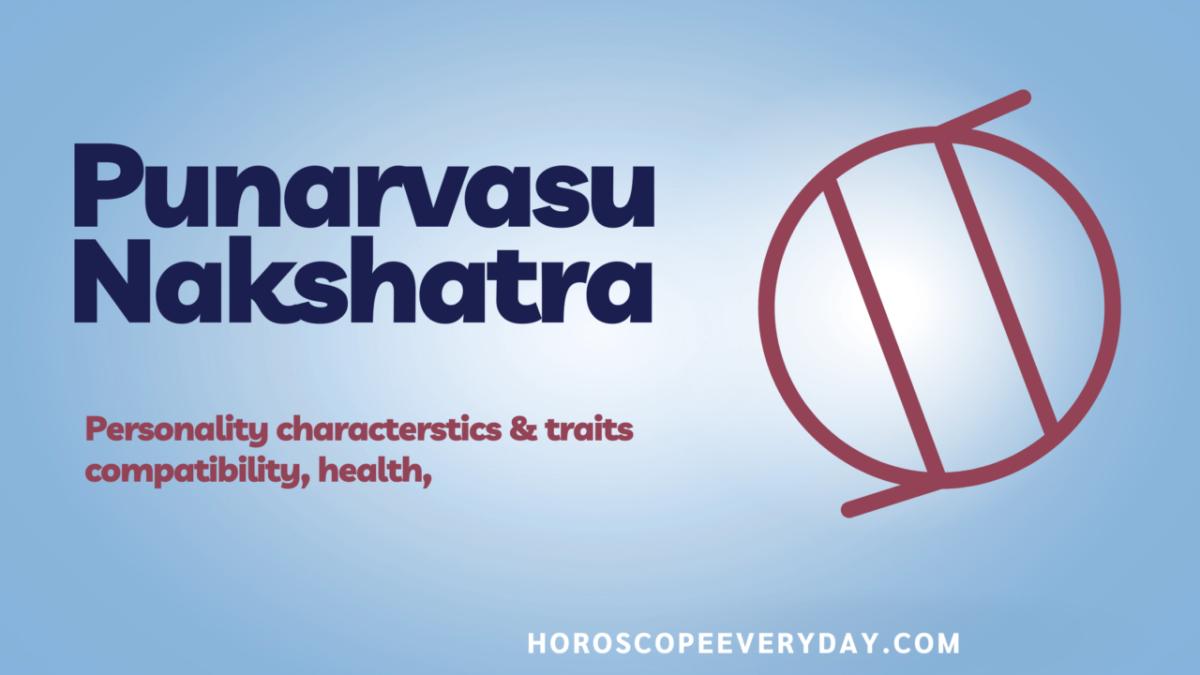
#Punarvasu #Nakshatra, often associated with Lord Rama’s birth star, carries a profound symbolism linked to the ‘quiver and arrow.’ According to the legend, Lord Rama possessed a quiver that never ran out of arrows, whether he was on the battlefield or on a journey. This symbolizes the idea of always having the necessary tools for success. Remarkably, it accompanied him during his exile and the epic battle against Ravana.
In essence, Punarvasu teaches us the value of leading a humble and simplistic life, regardless of our origins. Those born under this star are not driven by materialism; instead, they prioritize duty and honor over luxury. They have a knack for finding straightforward solutions to even the most complex questions, embodying the beauty of simplicity Punarvasu Nakshatra.
Translation “Return of the Light”
Symbol Bow and quiver with arrows
Animal Symbol #Cat
Presiding Deity #Aditi, #mother of the #Gods
Controlling/Ruling Planet #Moon
Ruling Deity of Jupiter #Parvati
The 4 Quarters of Punarvasu Nakshatra
1st quarter Ruled by Mars
2nd quarter Ruled by Venus
3rd quarter Ruled by Mercury
4th quarter Ruled by Moon
Nature #Deva (God-like)
Mode #Passive
Number #7
Gender #Female
Dosha #Vata
Guna #Sattwa
Element #Water
Disposition #Movable ( #chara)
Bird #Swan
Common Name of the Tree #Bamboo / Vaans
Botanical Name of the Tree Bambusa Vulgaris
Seed Sounds Ke, Ko, Ha, Hi.
https://horoscopeeveryday.com/punarvasu-nakshatra/
ARMY TO EAT THEIR BOMBS AS THEY HAVE KILLED ALL THE FARMERS
https://www.bitchute.com/video/B8RFTmlkvSzZ/
#mother #weffer

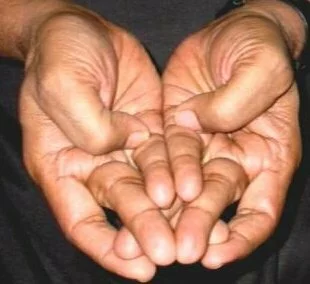

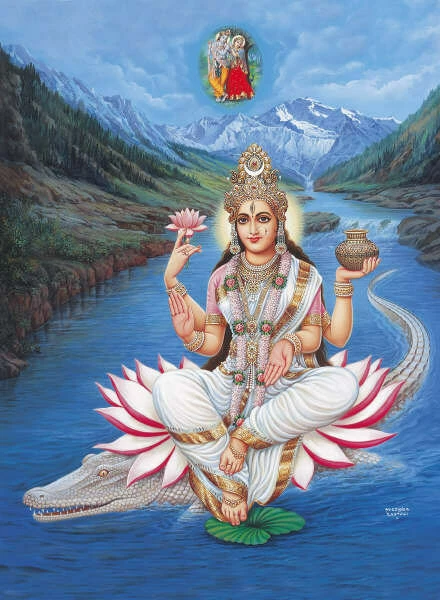
#RgVeda and we want to be careful about whether this degrades everything:
93-94. (?) The Pitṛs named Ājyapās are the sons born of Pulaha who was born of Kardama, the Prajāpati. They reside in those worlds which can go wherever one desires. They move about in the sky in various forms and shapes. The groups of Vaiśyas who seek benefit worship these Pitṛs in Śrāddha.
Their mental daughter is well known by the name Virajā. She was the chaste wife of Nahuṣa and the mother of Yayāti.
The Pitṛs named Sukālas are the sons of the noble-souled Vasiṣṭha, son of Hiraṇyagarbha (Brahmā). The Śūdras worship them.
Those worlds where they stay in the #heaven are #Mānasa by name. Their mental daughter is Narmadā, the most excellent river.
She sanctifies the living beings as she proceeds along the Dakṣiṇāpatha (southern tract and territory). She was the #wife of #Purukutsa and the #mother of #Trasaddasyu.
It is after accepting these that Manu the lord of the Manvantara initiates the Śrāddha rites everywhere.
It's of course a little weird, hard to tell who is intended to be human. Maybe weirder to think of Arya kings as "wedded" to the southern #Narmada #River.
#Rudra is reborn in each of these #Manvantaras, and #Agni and the #Pitrs are the only thing that stays the same.
Individuals change names, classes change jobs, for example Sadhyas are now Adityas, everything else is a flux besides Agni and Pitrs.
So those are two branches that use his two wives, ##Svaha and Svadha, for the #ending of #mantras. They are his #power or, i. e. Svaha carries mantras to #Devas, Svadha to the Pitrs, Sraddha Rite, which upon examination is about #Time rather than #ancestors. Agni shows manifested units of time, the #day, #year, etc., whereas Pitrs are much like #Father-Time, duration in the abstract.
Most streams of Purana have dissipated all this, such as:
Sādhya (साध्य) refers to a group of deities that was once worshipped in ancient #Kashmir (Kaśmīra) according to the Nīlamatapurāṇa.—Various groups of the deities like #Ādityas, #Vasus, #Sādhyas, #Viśvedevas and #Maruts have their place in the #pantheon of the #Nīlamata but nothing significant is said about them.
Or they may be found shuffled in to #Shiva #Ganas that have nothing to do with this.
Where discussed, they may include:
Arthasiddhi
Brahmāṇḍa-purāṇa II. 24. 27; 38. 3.
and importantly:
Viṣṇu, Nārāyaṇa, lying in sleep in the vast mass of water.*
- Vāyu-purāṇa 23. 108.
live in Bhuvarloka; Nārāyaṇa, their overlord
in the [Śatapatha-brāhmaṇa] their world is said to be above the sphere of the gods; according to Yāska [Nirukta, by Yāska xii, 41] their locality is the Bhuvarloka or middle region between the #earth and #sun;
in the later mythology they seem to be superseded by the Siddhas
The easily-copied rosters of Sadhyas are:
Manas, Mantṛ, Prāṇa, Nara, Pāna, Vinirbhaya, Naya, Daṃśa, Nārāyaṇa, Vṛṣa, Prabhu
Mana, Anumanta, Prāṇa, Nara, Apāna, Vīryavān, Vīti, Naya, Haya, Haṃsa, Nārāyaṇa, Vibhu, and Prabhu
The latter, from #Brihadaranyaka #Upanishad, is in the context that they take birth at will, consciously. The same group of entities changes names and kingdoms; the twelve #souls have #continuity. And so they remember that they once were, on the ideal or ideational plane:
Prāṇa, Apāna, Udāna, Samāna, Vyāna, Cakṣus, Śrotram, Rasa, Ghrāṇa, Sparśa, Buddhi and Manas.
There for example is #Mind's Eye, #Caksus, which is unlike #Indra, because #ordinary #vision requires a physical #eyeball and a #psychological response to stimulus, may be easily tricked. This is i#ncorporeal vision that represents #Perfect #Sight.
"Later #mythology" means the Sadhyas appear in #Mahabharata numerous times, but, barely have any references in Bhagavata Purana.
" #Narayana" is in #Rg-Veda as the author of Purusha Sukta. That's it
How #millennials learned to dread #motherhood
source: https://www.vox.com/features/23979357/millennials-motherhood-dread-parenting-birthrate-women-policy
Today, it’s genuinely difficult to find #mainstream portrayals of moms who are not stressed to the brink, depressed, isolated, or increasingly resentful.
Israeli drone attack kills four brothers during Jenin raid | AJ #shorts
A distraught mother searching a hospital found out four of her sons were killed in a drone strike during an Israeli raid on Jenin. An IED blast in the occupi...#AlJazeera #AlJazeeraEnglish #IED #Israeli #Jenin #alJazeera #aljazeeraEnglish #aljazeeralive #aljazeeravideo #aljazeeraEnglish #aljazeeralatest #aljazeeralive #aljazeeralivenews #attack #blast #distraught #drone #four #hospital #killed #latestnews #mother #newsheadlines #occupiedWestBank #raid #searching #sons #strike
Israeli drone attack kills four brothers during Jenin raid | AJ #shorts
Displaced Palestinian mother in Gaza gives birth to quadruplets | Al Jazeera Newsfeed
This Palestinian mother has given birth to quadruplets in Gaza after fleeing with her family from the north. Subscribe to our channel http://bit.ly/AJSubsc...#AlJazeera #AlJazeeraEnglish #Palestinian #alJazeera #aljazeeraEnglish #aljazeeralive #aljazeeravideo #aljazeeraEnglish #aljazeeralatest #aljazeeralive #aljazeeralivenews #birth #displaced #family #fleeing #latestnews #mother #newsheadlines #pregnancy #quadruplets
Displaced Palestinian mother in Gaza gives birth to quadruplets | Al Jazeera Newsfeed
Seemingly Impossible #Natural #Phenomena
#Mother #Nature's got some tricks up her sleeve that may leave you questioning reality.
Published 30th November 2023 (25:29)
Source: https://youtube.com/watch?v=GAewYoJG34c
https://www.bitchute.com/video/eJOKzh0PwV2U/
M.O.A.R - The #Mother #Of #All #Revelations
#greatest #evil the #world has ever seen still ongoing as the good do nothing
Palestinian killed after Israel prevents medics from helping him | Al Jazeera Newsfeed
A mother recalls her son’s killing after Israeli forces raided their home and prevented an ambulance from reaching her son, who had been shot. Deadly raids i...#AlJazeera #AlJazeeraEnglish #Gaza #Hamas #Israeli #Jenin #alJazeera #aljazeeraEnglish #aljazeeralive #aljazeeravideo #aljazeeraEnglish #aljazeeralatest #aljazeeralive #aljazeeralivenews #ambulance #deadly #forces #home #killed #killing #latestnews #mother #newsheadlines #occupiedWestBank #prevented #raid #raided #raids #reaching #shot #son #sons #truce
Palestinian killed after Israel prevents medics from helping him | Al Jazeera Newsfeed
Raw grief of a mother losing her son in Gaza | Al Jazeera Newsfeed
“I want to take him home.” This is the raw grief of a mother who has just lost her son in an Israeli air strike. In the past month Israel has killed more tha...#AlJazeera #AlJazeeraEnglish #Gaza #Israeli #air #alJazeera #aljazeeraEnglish #aljazeeralive #aljazeeravideo #aljazeeraEnglish #aljazeeralatest #aljazeeralive #aljazeeralivenews #annually #attack #children #conflictzones #grief #killed #latestnews #lost #mother #newsheadlines #raw #son #strike
Raw grief of a mother losing her son in Gaza | Al Jazeera Newsfeed
#Happy #Navratri - #Goddess is #Mahagauri.


As the nine nights represent the nine planets, we will be focussing on Navaratri and the nine planets with an account of one or another the planets for nine nights. For the eighth night of Navaratri, we will take the planet #Rahu. The colour for the Eighth day of Navaratri (Ashtami) is purple, so we scribe in #PURPLE for this eighth day observance of Navaratri. The Goddess is Mahagauri.
Today is the eighth day ( #Ashtami) of the Navaratri celebrations which are held for nine nights. All festivals are meant to remind mankind that they should cultivate noble qualities by engaging themselves in activities beneficial to one’s own self and society. Sai Baba made this reference to Navaratri and the Nine Planets:
As part of Navaratri celebrations, people worship different forms of divinity. You should develop sacred feelings and experience divinity. What is the inner meaning of Navaratri celebrations? These nine nights represent nine planets. Each planet has its own significance. However, these planets are not outside, they are within. If your feelings are impure and unsacred, the result also will be the same. You are responsible for the good and bad you think and experience.
Rahu
Rahu is a shadow planet that interrupts the delivery of light to and from the mind, the body, the spirit – as shadows block luminosity, light. The Moon (presiding deity of the mind) is one of the two natural luminaries, the other being the Sun. In Vedic myth, Rahu was formed when the cunning demon Swarbhanu attempted to obtain the nectar of immortality and was beheaded for his efforts. The head is called Rahu, the headless body is called #Ketu. The head is forever seeking, desiring wholeness and this explains to us how Rahu is significator of desire, and fraud; Rahu fraudulently sat among the gods to receive the nectar and his deception was exposed by Sun and Moon. Hence the eternal animosity of Rahu to #Sun (causes #eclipses) and #Moon (bedims Moon).
At a glance, Rahu is called the North Node, is exalted in GEMINI #ARDRA , co-lord of Aquarius (with Saturn) and has digbala (directional strength) in the 10th house. Rahu magnifies the effect of its Lord, and that of any planet it is conjunct. Rahu is of vata (airy) nature and rules the astral and possessions. Medically, Rahu is giver of incurable chronic diseases, snake bite, difficulties in breathing, chronic illness and mental illness.
Rahu signifies worldly desires, foreign lands, use of drugs and alcohol, separation, harsh and grating speech, insanity, fear and adversity, and the status of Rahu is out-caste. Rahu is said to be self-seeking, a deceiver, manipulator, ambitious and generally dissatisfied with life. There is always more, and Rahu, chalakaraka, (giver of fraud) will obtain more by any means possible. Rahu is always dissatisfied and seeks validation, higher status and office. Rahu – by fair or foul means – will take possession of any instrument that will empower the ego. Position, pride, greatness. In these affairs, Rahu cannot control himself. With Rahu, Station in life is nearly always improperly obtained and cannot be sustained as fraud is usually exposed soon after.
We began saying Rahu signifies desires. In fact, due seeking of desires, Rahu is the one planet that is said to cause reincarnation, which happens when desires remain unfulfilled. Desires are due discontent, seduction (of the mind) and mental delusion. There are the haves and have-nots in this world, and Rahu – who wants what he sees – goes around the rules, disregards boundaries and is always hungry for more. Rahu always surges with desire for the next thing, unhappy with anything that has been obtained. Think of cars on the highways and byways that have to overtake you and are disconsolate to stay on the speed limit and follow the laws of the road – unhappy at any speed – and you get an idea of Rahu.
Goddess Mahagauri
The name Mahagauri means extremely white, as she was white in colour and very beautiful (Mahā=great; Gaurī=white). Mahagauri is usually depicted with four hands, the hands holding a trident, lotus and drum, while the fourth is in a blessing gesture. The lotus is sometimes replaced with a rosary. She rides a white bull, usually shown wearing white clothes.
It is believed that the 16 year old unmarried Goddess Parvati wanted to marry Lord Shiva and, as such, did rigorous penance (tapasya) for a very long time to please him. Because of this, she ended up facing a lot of hardships and her complexion turned dark with dust, heat and starvation. Lord #Shiva, however, was pleased with her penance and agreed to marry her. Using the Ganges water flowing out of his matted hair, he washed her clean. Consequently, her white clothes and fair complexion started glowing radiantly again. Since then, she is known as Mahagauri.
#Mother #Gauri is #Devi, #Shakti or the Mother Goddess, who appears in many forms, such as #Durga, #Parvati, #Kali and others. She is auspicious, brilliant and protects the good people while punishing those who perform evil deeds. Mother Gauri enlightens the spiritual seeker and removes the fear of rebirth by granting salvation.
Significance of Navaratri
“Men are prone to exhibit rajasic (active, excitable) qualities like anger and hatred. They are menacing manifestations of Durga. The extolling of the Divine in song and poetry and the pleasing vibrations produced by them indicate the power of Saraswati. The pure qualities that arise in man such as compassion, love, forbearance and sympathy are derived from Lakshmi. When people worship Durga, Lakshmi and Saraswati externally in pictures or icons, they are giving physical forms to the subtle potencies that are within them. The unfortunate predicament of man today is that he is not recognising the powers within him and developing respect for them. He goes after the external, attracted by the physical forms. The relationship between the material and the subtle has to be understood.” Sai Baba, SS, 11/94, p. 284


